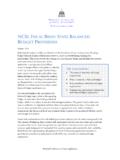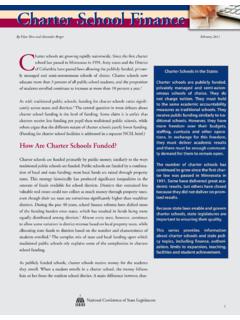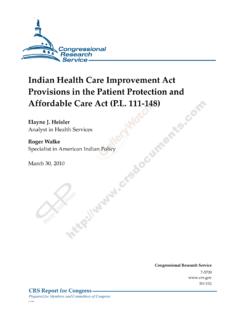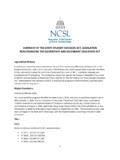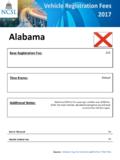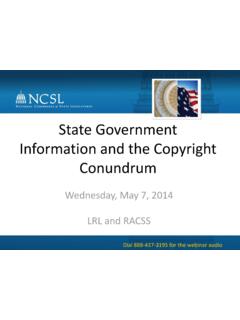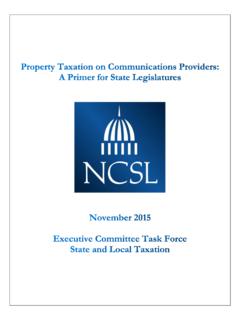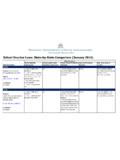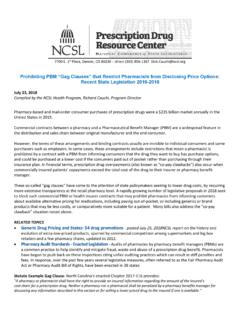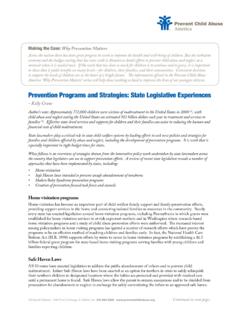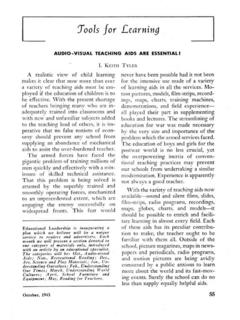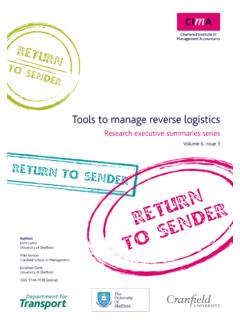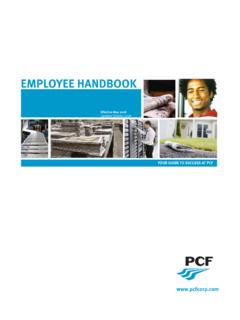Transcription of Pharmaceutical Supply Chain Security
1 Pharmaceutical Supply Chain Security Susan Thaul Specialist in Drug Safety and Effectiveness October 31, 2013. Congressional Research Service 7-5700. R43106. c11173008.. Pharmaceutical Supply Chain Security Summary The drug package that a community pharmacist hands to a patient, or a hospital pharmacist sends to a patient's bedside, or a physician administers in the medical office has reached the end of a complicated path. That path is called a Supply or distribution Chain . The upstream portion of the Chain includes the journey of each active and inactive ingredient and their chemical components to the manufacturer that creates the finished drug product. The downstream Chain , which this report addresses, includes the repackagers, wholesale distributors, associated storage and transport companies, and, finally, the dispenser.
2 Dispensers include independent community or Chain pharmacies, hospitals or other health care facilities, and physicians' offices. Usually the Supply Chain provides consumers with unadulterated prescription drugs. However, the Chain is potentially vulnerable, and when it breaks, a dispenser might provide a counterfeit product containing no active ingredient, less-than-labeled dosage, or a dangerous substitution. The dispenser might also provide a mishandled or diverted drug that has become sub- or superpotent or has gone past its expiration date. In addition to the potential harm to patients, these Security breaches can affect a manufacturer's reputation and financial bottom line.
3 Congress has addressed Pharmaceutical Supply Chain Security several times over the past 107. years. The 1906 Food and Drugs Act focused on labeling; the 1938 Federal Food, Drug, and Cosmetics Act (FFDCA) addressed adulteration, misbranding, and the registration and inspection of manufacturing establishments; and the Prescription Drug Marketing Act (PDMA, 100- 293) required that wholesale distributors be licensed by the states and required that a wholesale distributor, except one in a specified ongoing relationship with the manufacturer, provide to the purchasing distributor or dispenser a statement called a pedigree identifying each prior sale, purchase, or trade of such drug.
4 More recently, the Food and Drug Administration Amendments Act of 2007 (FDAAA, 110-85) required the Secretary to develop standards and identify and validate effective technologies for the purpose of securing the drug Supply Chain against counterfeit, diverted, subpotent, substandard, adulterated, misbranded, or expired drugs ; and, in 2012, the Food and Drug Administration Safety and Innovation Act (FDASIA, 112-144). expanded registration and reporting requirements. Despite current federal law and actions by state legislatures, opportunities for breaches of the Supply Chain continue to exist. The 112th and 113th Congresses have worked to craft a set of national requirements that would protect both patient and manufacturer, and allow the assignment of accountability for identified problems, while attempting to manage cost and avoiding a confusing patchwork of state legislation.
5 In their work, House and Senate policymakers have been considering many decisions. These include, for example, definitions; pedigrees; track-and-trace technologies; serialization; lot- and unit-level requirements; authentication; interoperable data collection and systems; data confidentiality and access; requirements for transaction reporting and notification regarding suspect deliveries; implementation timing; licensure, registration, and accreditation standards for entities in the Supply Chain ; accountability; cost; and the relationship between federal and state laws. After passing individual bills ( 1919 and S. 959), majority and minority leadership of the House Committee on Energy and Commerce and the Senate Committee on Health, Education, Labor, and Pensions announced an agreement on September 25, 2013.
6 The House passed the text of the agreement, 3204, on September 28, 2013, and the bill awaits Senate action. Congressional Research Service . Pharmaceutical Supply Chain Security Contents Pharmaceutical Supply Chain : Why People Care .. 1. Pharmaceutical Supply Chain : How It Works .. 3. How Congress Has Moved to Regulate the Supply Chain .. 7. Prescription Drug Marketing Act of 1987 .. 7. Food and Drug Administration Amendments Act of 2007 .. 9. Food and Drug Administration Safety and Innovation Act of 2012 .. 10. State 12. Professional and Industry Association Activity .. 13. Policy Decision Points .. 14. Concluding Comments .. 17. Figures Figure 1. Downstream Pharmaceutical Supply Chain .
7 6. Contacts Author Contact 18. Congressional Research Service . Pharmaceutical Supply Chain Security Pharmaceutical Supply Chain : Why People Care The prescription drug that you picked up on the way to work this morning may have changed hands many times before the pharmacy clerk handed you the amber vial with its sticker label and perhaps one or two multi-page information inserts about the drug. That means that there were many potential opportunities for your drug to be mishandled or even substituted with a counterfeit. The counterfeit could be a watered down version of the actual drug, a sugar-filled non-medicinal fake, or a substitute chemical that looks, weighs, and reacts like the real drug but is actually toxic.
8 While, overall, the drug Supply is typically safe, Congress, the Food and Drug Administration (FDA), industry groups, and consumers are working to devise a system to limit opportunities for counterfeiting and mishandling. Health experts call the drug's journey a Supply Chain . It begins with the ingredients a manufacturer uses, carries through the manufacturing process, and continues through the distribution system of wholesalers, warehouses, and transportation to the dispensing retail and institutional pharmacies all the way to you, the consumer, the FDA, a federal scientific regulatory agency within the Department of Health and Human Services (HHS), regulates not only which drugs manufacturers may sell in the United States but also the integrity of the drugs through the Supply Chain , which is now In April 2013 testimony before the House Committee on Energy and Commerce, Janet Woodcock, the Director of FDA's Center for Drug Evaluation and Research, described the Chain as [T]he increasingly complex drug Supply Chain , from raw source materials to finished products for consumers, presents multiple opportunities for the product to be contaminated, diverted, or otherwise adulterated.
9 Our efforts to secure the Supply Chain include minimizing risks that arise anywhere along the Supply Chain continuum, from sourcing a product's ingredients through the overseeing of a product's manufacture, storage, transit, sale, and distribution. A breach at any point in this continuum could lead to dangerous and even deadly outcomes for patients. Dr. Woodcock referred to problems including contamination, diversion, counterfeiting, and other adulteration. 4 She gave several examples of counterfeit and stolen or diverted products: counterfeit Adderall and Vicodin sold on the Internet; stolen insulin vials needing refrigeration that were later purchased by patients without accountability for appropriate handling; and a stolen 1.
10 Because the term consumer could refer to retail or hospital pharmacy or clinician's practice that purchases the drug from a distributor or the manufacturer in addition to the person who uses the drug, this report uses the term patient to refer to the person who uses the drug. 2. Statement of Deborah M. Autor, Deputy Commissioner for Global Regulatory Operations and Policy, Food and Drug Administration, Department of Health and Human Services, before the Committee on Health, Education, Labor, and Pensions, United States Senate, September 14, 2011, 3. Statement of Janet Woodcock, Director, Center for Drug Evaluation and Research, Food and Drug Administration, Department of Health and Human Services, before the Subcommittee on Health, Committee on Energy and Commerce, House of Representatives, hearing on Securing Our Nation's Prescription Drug Supply Chain , April 25, 2013, 4.
